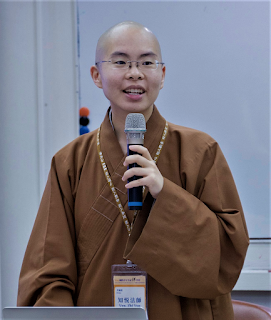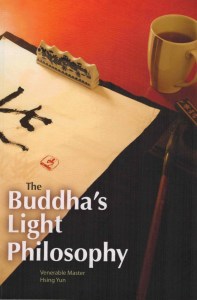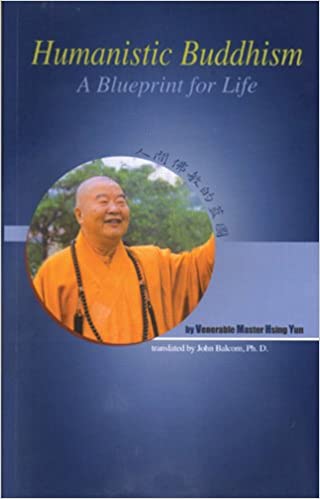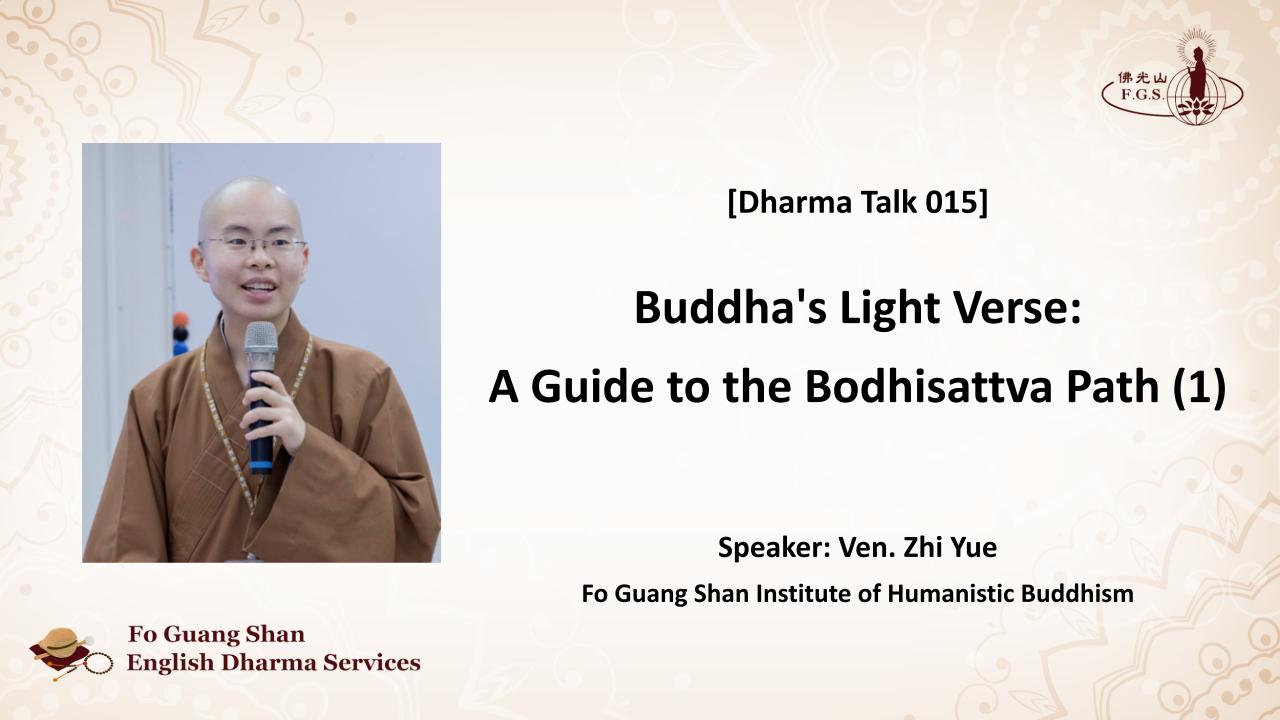
Speaker: Ven. Zhi Yue
Fo Guang Shan Institute of Humanistic Buddhism
I. Introduction
Auspicious blessings to our viewers around the world!
Welcome back to another session of Fo Guang Shan English Dharma Services.
It’s been slightly over three months since the beginning of our YouTube channel. And if you’ve been joining us on a weekly basis, you’ve probably become quite familiar with our weekly chanting procedure. Each session is concluded with a dedication of merits through the chanting of the Buddha’s Light Verse, which reads as follows:
May kindness, compassion, joy, and equanimity pervade all worlds;
May we cherish and build affinities to benefit all beings;
May Chan, Pure Land, and Precepts inspire equality and patience;
May our humility and gratitude give rise to great vows.
In Fo Guang Shan temples, we also end our meetings, book study groups, or cultivation sessions by reciting this verse. We also chant these four lines before a meal. As this is something we chant so frequently, let us use this opportunity to discuss the meaning of this verse, as well as how we can use it as a guide for our daily practice to benefit both ourselves and others.
The following will be covered:
1. The Significance of Four-Line Verses in Buddhism
2. Origin of the Buddha’s Light Verse
3. Meaning and Practice of the Buddha’s Light Verse
4. Buddha’s Light Verse as a Dedication of Merit
Since we are going in-depth into the Buddha’s Light Verse, this talk will be divided into two segments. For the first segment, we will cover the significance of Four-Line Verses in Buddhism, the origin of the Buddha’s Light Verse, and the meaning and practice of the first two lines in the Buddha’s Light Verse. In the second segment, we will continue our discussion of the final two lines as well as the Buddha’s Light Verse as the Dedication of Merit.
II. The Significance of Four-Line Verses in Buddhism: A Mnemonic Device for Practitioners
Before we go into the content of the verse, let us begin by exploring the significance of four-line verses in Buddhism. In ancient Indian literature, the verse form was often used to offer praise or tribute. During the Buddha’s time, the teachings were passed down through oral tradition. These verses served as a way to summarize teachings into a concise form that was easy to remember and recite. The most common type was the four-line stanza, which has since then become one of the standard Buddhist poetic forms.
In the Diamond Sutra, the Buddha says practicing something as short as the four lines of verse can exceed other grandiose acts of merit. The Buddha says,
“Suppose a person gives a quantity of the seven treasures to all the Sumeru mountains within a three thousandfold world system; if another person were to use […] as few as four lines of verse, and receive, uphold, read, chant, and explain it to others, his merit would be […] an incalculable number of times that cannot even be suggested by metaphors—greater.”
Likewise, in the Lotus Sutra, the Buddha says,
“If there are good men or good women who, with regard to this sutra, can accept and uphold even one four-line verse, if they read and recite it, understand the principle, and practice it as the sutra directs, the benefits will be very many.”
The significance of four-line verses is also mentioned several times throughout other sutras.
So, From this, we can see the importance of upholding and applying the four-line verses in our Buddhist practice. We can also see that even though four-line verses are short, they contain the heart—or the essence—of the Buddha’s teachings. This tradition has since been passed down by generation after generation of eminent Buddhist masters; many created verses in the language of their era, using them to remind practitioners to keep in mind the Buddha’s teachings and put them into practice. While it can be difficult to memorize sutras, the four-line verse serves as a mnemonic device for practitioners to help us better remember specific teachings.
III. Origin of the Buddha’s Light Verse: A Modern Verse for Modern Bodhisattvas
Although there are many existing verses in the Buddhist tradition, people today need a verse that is appropriate to the situations of contemporary life. As we know, the world has experienced rapid changes in the last few centuries—in terms of culture, language, and technology. Therefore, a new verse is needed to ensure that the Buddha’s teachings are still timely and applicable to practitioners today.

It is with this spirit in mind that Venerable Master wrote the Buddha’s Light Verse during the founding years of the Buddha’s Light International Association (BLIA), which is an organization officially established in 1992 consisting of both monastic and lay Buddhists. Keeping in line with the tradition of eminent Buddhist teachers and their four-line verses, he hopes that the verse would serve as the motto of life by which Buddha’s Light members should abide. In other words, this is a universal teaching not limited to only monastics or only laity. It is something that everyone from all walks of life can practice and aspire to.
IV. Meaning and Practice of the Buddha’s Light Verse: A Guide to the Bodhisattva Path
In the Epoch of the Buddha’s Light: A Letter to Members of the BLIA, Venerable Master Hsing Yun offers an explanation behind the meaning and practice of the Buddha’s Light Verse.
(A side note regarding this publication: This is an old translation from 1999 that has gone out of print. If you’re lucky at finding a copy at your local branch temple, don’t be surprised if you find the translation different than what it is now. Speaking of translations, you may have also encountered other English versions of the Buddha’s Light Verse. The Chinese Edition was published in 1997, and the English translation was published in 1999. The letter has gone out of print as it has developed into a later publication called Buddha’s Light Philosophy. However, as the Buddha’s Light Philosophy and other publications only briefly touch upon the meaning of the Buddha’s Light Verse, let’s go back into the archives and bring attention to Venerable Master’s intent behind the creation of this verse.)
To explore the significance of the Buddha’s Light Verse, let’s divide the verse into four parts and look into the meaning line by line:
V. First Line: May kindness, compassion, joy, and equanimity pervade all worlds
So, this first line asks what is the intent of our Buddhist practice? What do we hope to develop in ourselves?
Some people misinterpret the Buddha’s teachings as a way to escape from the world; their motivations for cultivation come from a self-centered intention. According to the Avatamsaka Sutra, “To engage in virtuous cultivation, yet having forgotten about the mind of great vows, is called unwholesome karma.” In other words, although we may uphold the precepts and practice other virtuous qualities, it is still considered unwholesome if it comes from a selfish intention.
That’s why the first step before beginning any practice, or doing any action is to clarify our intentions. What exactly do we hope to achieve by learning Buddhism?
This first line (“May kindness, compassion, joy, and equanimity pervade all worlds”) is a summary of the kind of thoughts and intentions that should guide our cultivation. It tells us about the mental qualities in which we should approach Buddhist practice, which are kindness, compassion, joy, and equanimity—the Four Immeasurables of a bodhisattva. They are immeasurable because they are not limited by the number or type of sentient beings that these mental states are directed towards.
i. Kindness and Compassion
Let’s begin with loving-kindness and compassion. How does the Buddha define the two? And what are their differences?
At first glance, kindness may seem synonymous with compassion, but according to the sutras, there are subtleties between them.
Kindness is defined as the wish to promote the well-being and happiness of others, while compassion is defined as the desire to alleviate the suffering of others.
The Visuddimagga illustrates the nuance between the two using the following simile:
Kindness can be likened to the mental state of a parent of a healthy child; it is their wish for the child to be happy in whatever they do.

Compassion is likened to the mental state of a parent of a sick child; they strongly wish to remove the pain which the child experiences.

In the book, Humanistic Buddhism: A Blueprint for Life, Venerable Master Hsing Yun also explains that loving-kindness and compassion does not mean “turning the other cheek,” nor does it mean turning a blind eye. Now, most people think of kindness and compassion by equating it with general forgiveness and leniency. However, being able to stand up for what is right, and having the courage to speak the truth and for justice, can also be expressions of loving-kindness and compassion.
According to Venerable Master Hsing Yun, “One can be without anything, but one cannot be without kindness and compassion.” Kindness and compassion are the foundation of Buddhist practice. It is this mentality which gives rise to bodhi, which in turn gives rise to wisdom and buddhahood.
True loving-kindness and compassion requires wisdom, which is not something that comes naturally, but something that comes with experience and practice. Sometimes, though we may have good intentions, our actions may become the cause of another person’s suffering. This is due to a lack of insight and wisdom on our behalf. For example, parents who are too overindulgent with their children may not guide them to develop the necessary skills to cope with challenges later in life. Though the parents may seem kind and compassionate by spoiling their children, their actions may end up being harmful to a child in the long run. [Slide 34] That is why there is a saying from the Great Outline of Calming and Contemplation (ch. Mohe zhiguan 摩訶止觀): “Loving-kindness and compassion are indivisible from wisdom; and wisdom is indivisible from loving-kindness and compassion. ”
Therefore, in each of our actions, we must first examine ourselves to see whether our intentions are truly kind and compassionate, and whether these good intentions are carried to fruition.
ii. Joy
“Joy” is that next of the Four Immeasurables. Like kindness and compassion, joy is also fundamental to the practice of a bodhisattva.
What is joy? Joy is different from ordinary happiness in that it comes from delighting in the well-being and success of others. It can be likened to the joy parents experience upon seeing their child’s accomplishments and successes. It comes from truly wishing others well without any selfishness.
Often, when we see other people succeed, we might begin to compare ourselves with them. We may feel jealous or resentful that they are doing well when we are not. Or we might feel pride because we feel we are better than them. However, feeling resentful and jealous over the positive actions of other people cuts us off from our own spiritual progress. By rejoicing over the positive actions of others, it allows us to connect with their good deeds and be closer to enlightenment.
Therefore, rejoicing in the happiness and merit of others is also one of the key parts of cultivation that we should practice until it becomes a habit. Instead of feeling jealousy or envy, we should instead feel happy for others when they encounter good fortune. Instead of criticizing, we should praise the good deeds of others no matter how trivial they might be.
Additionally, when we serve others, we need to ask ourselves whether we are doing so with joy. Or are we doing it with a grudge? When we give to others, we should give the best of ourselves, not the worst of ourselves. That of course is to give with joy.
iii. Equanimity
The last of the Four Immeasurables is “equanimity.”
Equanimity is a state of mind that is unshaken by gain and loss, praise or blame, pleasure or pain. This can only be achieved through the power of observation and relinquishing our sense of “I.” It also means letting go of our discrimination, and abandoning our attachments to dualistic views. Equanimity does not mean indifference or unconcern towards others. Instead it means having balanced emotions towards people and things.
If we look closely at our daily lives, we notice that we are constantly going between contrasting notions—either good or bad; success or failure; gain or loss; happiness or sorrow; hope or fear. Developing a mental state of equanimity means to practice being unwavered in spite of the fluctuations in the world.
So, to recap, kindness, compassion, joy, and equanimity are the Four Immeasurables. Our intention behind our cultivation should be to develop these four qualities of a bodhisattva so that we can embrace all beings. Hence, these four qualities can be said to pervade all worlds.
VI. Second Line: May we cherish and build affinities to benefit all beings
Next, let’s talk about “May we cherish and build affinities to benefit all beings.” Now that we have a clear intention for our practice, our next step is to set out to do it. But how do we begin to benefit all beings? In Buddhism, the Six Paramitas—or the Six “Perfections”—lay the foundation for a bodhisattva’s practice to benefit both oneself and others. The first of the Six Paramitas is giving, which includes the giving of material wealth, the giving of the Dharma, and the giving of fearlessness.
However, if we see “giving” as the transfer of one thing from a person to another, then we will frequently find ourselves in situations where we cannot give. For example, if we are in a meditation retreat observing silence, it is rather difficult to give things to one another or talk to each other.
This means we need to reevaluate our concept of giving. In this line of the Buddha’s Light Verse, Venerable Master reminds us that there are two important elements to giving: (1) to cherish, and (2) to build affinities.
i. Cherishing Our Blessings
To cherish means to fully appreciate the blessings we have right now. In today’s consumer society, many people buy more than what is needed and throw away things that can still be used. People make decisions that are wasteful in their use of money and material resources.
For example, there was once a young businessman who invited a group of friends to dinner at a restaurant during a trip. He wanted to be an excellent host, and ordered plenty of food for his guests so that they can experience the local delicacies. When the food arrived, they ate quickly and hurried to leave for the next event on the itinerary.
As they got up to leave the restaurant, a few old ladies from the table next to them reminded them that they had left a good third of food untouched on the table.
The businessmen said to the old ladies, “We paid for our food, so it is none of your business how much food we leave behind.”
One of the ladies replied, “Young man, money is yours, but resources belong to the society. There are many others in the world who are facing shortage of resources. You have no reason to be wasteful.”
In this story, we see the businessman paying for his friends’ dinner. On the surface, it seems like a giving of material things, which is good right? But if we look more deeply, they have wasted resources that other people could have used. Not only that, but the food had come from the effort of others, and they have wasted that as well.
That is why our practice in giving must first be rooted in cherishing our blessings. All the food that we eat, all the clothes that we wear, and all the things that we think we own—all of these come from many causes and conditions, as well as the effort of many people. When we cherish what we have, we not only appreciate the effort of others, but we also give them the chance to use these same resources.
In other words, cherishing our blessings is a form of giving that we can practice no matter where we are and what situation we are in. By doing so, we are giving others appreciation for their hard work, and giving others the opportunity to enjoy the same resources we do.
ii. Building Affinities
The next aspect of giving in the Buddha’s Light Verse is “building affinities.” Like mentioned before, no one can exist in this world alone—we depend on our mutual affinities for survival. When we see our connections with others, the more we understand the importance of creating positive energy in this world. According to Venerable Master, building affinities is the single greatest force for bringing good into this world.
How do we create positive connections? In addition to the giving of material things, the giving of Dharma, and the giving of fearlessness, there are also many other ways to broadly form good affinities. For instance, we can encourage others. We can share our knowledge with them. Even a simple nod, a smile, a greeting, or a heartfelt wish are all ways we can build affinities with other people. Moreover, we can follow the Four Givings to build affinities, which is to give others faith, to give others hope, to give others joy, and to give others convenience.
VII. Conclusion
This concludes the first segment of the talk on the Buddha’s Light Verse. Today, we talked about the importance of four-line verses in Buddhism. And we also talked about the origin of why Venerable Master wrote the Buddha’s Light Verse.
In addition, we touched upon how the first line reminds us to approach our practice [Slide 49] with the intention of kindness, compassion, joy, and equanimity.
Lastly, we are reminded that in our practice of giving, it should always start from cherishing and building affinities.
Please join us next week for the next segment, where we will continue talking about the next two lines of the Buddha’s Light Verse as well as how it is used as the Dedication of Merit.
If you found this useful to your practice, please share it with your friends and be sure to subscribe to the channel.
Thank you very much for joining us and we hope to see you next week. Omituofo!
FGS Publications Mentioned in this Dharma Talk:
The Diamond Prajnaparamita Sutra

The Diamond Sutra is one of the most influential Mahayana Buddhism. It has been considered the essential object of devotion and study in Chan Buddhism. It explains the emptiness of all phenomena and the importance of liberating all living beings without attachment.
Translated by FGS International Translation Center
Click here to read the sutra.
Buddha’s Light Philosophy

The Buddha’s Light Philosophy examines the management and accomplishments of the Fo Guang Shan Buddhist Order and the Buddha’s Light International Association (BLIA). These organizations, founded to further the goals of humanistic Buddhism, have flourished around the world and touched many lives. The Buddha’s Light Philosophy traces their purpose, mission, concepts, and guidelines to provide the reader with an understanding of Humanistic Buddhist practice in the modern world.
Translated by FGS International Translation Center
Click here for more information.
Humanistic Buddhism: A Blueprint for Life

Humanistic Buddhism: A Blueprint for Life reclaims the Buddhist scriptures in the name of Humanistic Buddhism. Venerable Master Hsing Yun examines health, religion, politics, family, and many other subjects by drawing from the vast expanse of Buddhist literature to show how the wisdom of the Buddha is not only relevant, but imperative for modern living.
Translated by: John Balcom, Ph.D.
Click here for information.

